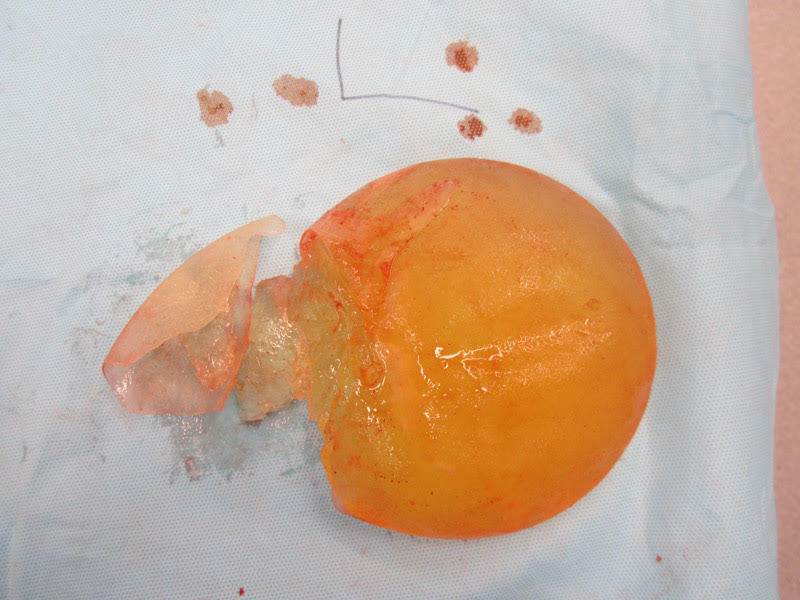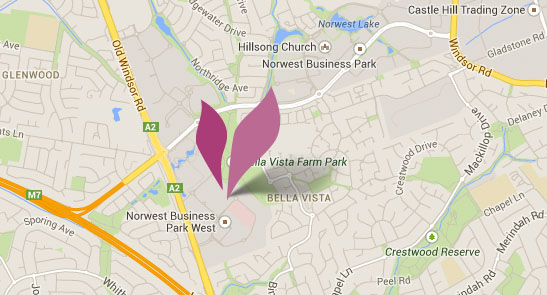What happens when a breast implant ruptures?
What happens when a breast implant ruptures?
Sydney breast implants
Breast augmentation is one of the more commonly performed cosmetic surgery procedures, and has been shown in studies to have a patient satisfaction rate of over 98%. However, just like all surgical procedures, it isn’t without risk. It’s important to understand the possible risks of any surgery that you may be considering.
One possible complication of breast augmentation is the rupture of a breast implant. This occurs when the silicone shell of the implant develops a hole or a tear. Although studies have shown that it’s uncommon, up to 10% of women may experience an implant rupture within 10 years after the placement of their implants.
How will you know if a breast implant ruptures? How is this problem addressed? The answers depend on what type of implants you have.

Rupture of a silicone implant
When a silicone implant ruptures, there will not always be symptoms. Some women experience breast pain, lumps, hardening, or changes in shape as a result of the rupture. However, some ruptures are “silent,” meaning that they don’t cause any symptoms at all. A silent rupture may be found on a routine imaging study like an MRI or Ultrasound.
For patients who have symptoms from their implant rupture, then surgery is generally recommended as soon as the patient can manage it. For a patient with a silent rupture, surgery is less urgent. This choice should be made in consultation with a qualified plastic surgeon, so the risks and benefits of each option can be explored.
The surgical options are to remove the implant and replace it with a new one, or to remove it without replacement. In general, the same procedure is also performed on the second breast. This is because both implants were manufactured and placed at the same time; if one has ruptured, then it’s likely that the second one is also close to rupturing. It’s better to go ahead and address it while the patient is already going through surgery, rather than risk needing a second surgery in the near future.
What type of surgery is performed will depend on whether any silicone that has escaped from the implant is still contained within the capsule of scar tissue around the implant (intracapsular rupture), or if some silicone has migrated outside of the capsule (extracapsular rupture).
For an intracapsular rupture, the procedure is fairly straightforward. Dr. Sandercoe uses an inframammary incision (at the base of the breast) to open the implant pocket. The implant is removed, and the silicone inside of the capsule is scraped out. If a woman is choosing removal without replacement, then he may leave the capsule in place or may remove it; this will depend on the characteristics of the capsule as well as the patient’s preference. If she is getting a new implant and the capsule is being left behind, the new implant will be placed into the same capsule. In some cases, part or all of the capsule may be removed, and a new capsule will form around the new implant.
For an extracapsular rupture, the procedure is somewhat more complicated. After removal of the implant and the capsule, Dr. Sandercoe will remove as much silicone as possible from the surrounding tissues. For older implants that contain a more liquid type of silicone gel, this can sometimes be difficult, since the silicone infuses into the tissues. For the newer generations of highly cohesive silicone implants, there is much less migration of silicone into tissues. Once the removal is completed, a new implant can be placed if desired.
Rupture of a saline implant
A saline implant still has a soft silicone shell. The difference is that, inside of the implant, there’s sterile salt water instead of silicone gel. Because of this, when a saline implant ruptures, the salt water filling the implant will quickly leak out into the surrounding tissues and be absorbed by the body. The breast will take on an unnatural “deflated” appearance as the implant loses volume.
If this occurs, the patients should consult with a plastic surgeon as soon as possible to address the problem. The options are to remove the implant without replacement, or to replace it with a new implant. In most cases, the implant on the other side will be replaced too, for the reasons mentioned previously.
If a patient wants to have her saline implants replaced, she doesn’t have to choose the same type of implants again. Most patients choose to go with highly cohesive silicone implants instead. With the newer technology used to create them, these implants are very safe and unlikely to cause issues. Dr. Sandercoe generally recommends silicone implants to his patients, because they look and feel much more natural and have a lower rate of rippling.
Sydney breast implants
When you’re getting breast implants, it’s important to understand that there is a risk that you’ll experience an implant rupture in the future. The chances are fairly small, but it can occur. If it happens, it may require you to have another surgery, so it’s important to be prepared for the possibility.
If you’ve experienced an implant rupture, then you should consult with a qualified plastic surgeon right away. This doesn’t have to be the same surgeon who originally placed your implants. If you’re in the greater Sydney area, then we invite you to come in for a consultation with Dr. Sandercoe. He will offer you straightforward advice based on the latest research in the field. To book your appointment, simply contact our front desk by calling or emailing us (see the links on the left).
Related Articles





